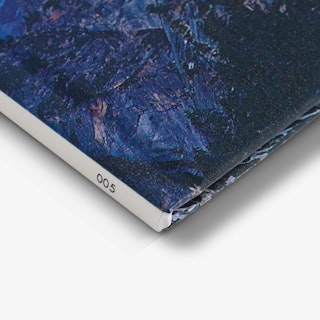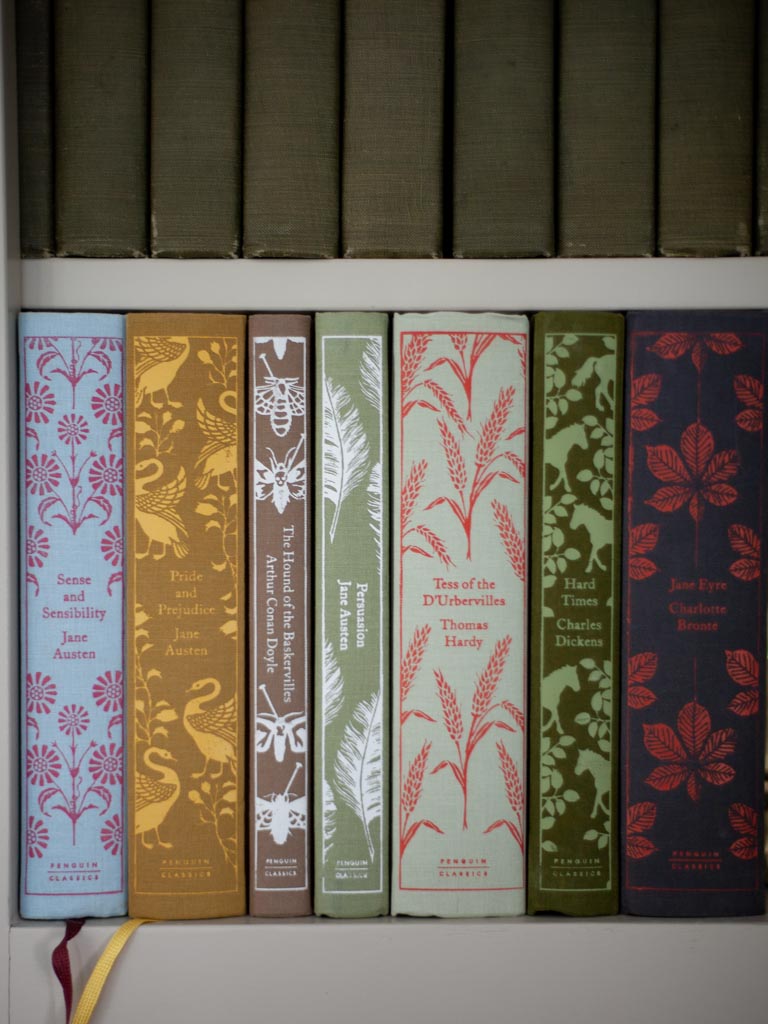Hardcover Books for Teens and YA Fans
Hardcover Books for Teens and YA Fans
Blog Article
A Comprehensive Guide to the Process of Hardbound Books Printing
When you start the trip of hardcover publication printing, recognizing the entire process is important. As you browse via binding and top quality control, you'll find that every decision impacts the book's general allure.
Recognizing the Hardcover Publication Framework
When you check out the world of hardbound publications, you'll quickly see that their structure is unique and deliberate. The external housing, commonly constructed from durable cardboard, provides sturdiness and security. You'll discover a textile or natural leather covering, which not only boosts looks but additionally contributes to the publication's durability. Inside, the endpapers connect the cover to the message block, ensuring a smooth interchange.
The message block itself includes several signatures, or folded sheets, stitched with each other for toughness. You'll see that the back is strengthened, enabling a smooth lay-flat analysis experience - hardcover books. In addition, the publication's weight frequently communicates a sense of quality and permanence
Hardcover publications generally include a dust jacket, which serves as a marketing device while securing the cover. Recognizing these elements assists you appreciate the craftsmanship behind hardbound books and their one-of-a-kind charm in the literary world.
Manuscript Preparation and Editing
Obtaining your manuscript ready for printing is necessary, and it starts with correct formatting guidelines. You'll require to understand the modifying process to refine your job and guarantee it reverberates with viewers. And also, mastering checking techniques can help you catch those annoying mistakes before your book goes to print.

Manuscript Format Standards
Appropriate manuscript formatting is essential for creating a professional-looking hardcover book. Begin by selecting a standard font like Times New Roman or Arial in 12-point dimension. Usage double-spacing throughout the paper to boost readability. Set your margins to 1 inch on all sides, giving your text space to breathe. Number your pages in the leading right edge, and include your phase titles at the beginning of each new section. Usage clear headings to indicate sections, and prevent excessive formatting like bold or italics unless essential. Ensure to check your manuscript for uniformity stylishly, making certain that every little thing from spelling to spacing complies with your selected standards. Adhering to these steps will certainly establish a solid foundation for your book.
Modifying Refine Essentials
Modifying your manuscript is an important step that can transform it from an outline right into a sleek final item. Begin by reviewing your work critically, focusing on flow, framework, and quality. Seek disparities in your narrative, character advancement, or argumentation. It's helpful to take breaks between rounds of editing and enhancing to gain fresh point of views. Do not wait to reduce unneeded web content or rephrase awkward sentences; this will certainly enhance readability. Think about looking for comments from trusted peers or professional editors who can offer useful understandings. Remember, editing isn't almost taking care of errors; it has to do with fine-tuning your voice and guaranteeing your message reverberates with readers. Accept the process, and you'll see your manuscript luster.
Checking Methods Overview
As soon as you have actually brightened your manuscript with modifying, the following step is to assure it's cost-free of mistakes that might distract visitors. Review your manuscript aloud-- this helps you hear uncomfortable wording and area typos. Consider publishing your manuscript; analysis on paper can reveal errors that displays miss.
Designing the Publication Cover and Interior
When you're developing your publication cover and inside, you'll desire to concentrate on essential layout components that catch your target market's focus. Selecting the appropriate typography styles and very carefully selecting shades and images can make all the distinction in communicating your publication's theme. Allow's explore how these selections can elevate your job and draw in visitors.
Necessary Style Elements
Producing an eye-catching book cover and a well-designed interior is necessary for attracting readers and improving their experience. Choose shades and images that reflect your publication's motif and mood.
A clean, orderly layout assists readers browse easily. Remember, a natural layout throughout your publication fosters a professional look that can substantially impact a reader's decision to choose it up.
Choosing Typography Designs
Typography plays a vital function in both the book cover and indoor design, shaping just how viewers perceive your material. When choosing typography styles, consider your publication's category and target audience. Assume regarding power structure-- make use of various designs for headings and body message to lead visitors easily through your work.
Color and Images Option
Picking the right shades and imagery is crucial for recording viewers' attention and conveying your publication's styles. Begin by considering your style; vibrant shades could help a kids's book, while muted tones suit a secret novel. hardcover books. Use images that reverberates with your material-- pictures, images, or abstract styles can improve your message
Consider the emotions you wish to evoke. Warm colors can produce excitement, while great shades frequently convey peace. When developing the cover, make particular the imagery does not overwhelm the title and author's name; clearness is essential. Inside, utilize regular color pattern that complement your typography. This cohesive approach not just raises your publication's visual but additionally enriches the visitor's experience, making it a lot more memorable.
Choosing the Right Paper and Materials
When choosing paper and products for your hardcover book, it's vital to consider how they'll impact the overall look of your job. Beginning by selecting the appropriate paper weight; heavier supply frequently conveys top quality and resilience, while lighter paper can create an extra fragile touch. Take into consideration the coating as well; glossy paper enhances shades and images, while matte can supply a sophisticated, underrated look.
Don't ignore the cover products. Towel, leather, this or published paper can set the tone for your publication. Opt for acid-free paper to prevent yellowing over time if your job consists of photos. In addition, consider the binding materials; using high-quality adhesive warranties your publication lasts.
Eventually, the selections you make right here show your vision, so put in the time to example different products (hardcover books). Your options will certainly aid develop a publication that's not just aesthetically enticing however additionally durable and practical
The Printing Process: Strategies and Technologies
A selection of printing strategies and innovations can bring your hardbound publication to life, each offering unique advantages. Digital printing is a prominent choice for brief runs, permitting fast turnaround and cost-effective remedies. It's ideal when you require to print smaller quantities without sacrificing quality. On the other hand, offset printing master creating huge quantities, supplying high-grade and consistent outcomes. This technique is suitable for comprehensive magazines where color precision and great details issue.
For special results, you could think about methods like foil stamping or embossing, which can include an extravagant touch to your cover. Furthermore, you can choose various inks, including green alternatives that deal with eco aware visitors. Recognizing these techniques aids you make informed decisions, guaranteeing your hardcover book not just looks wonderful but additionally fulfills your manufacturing requires effectively. Choose the best strategy to raise your book's allure and influence.
Binding Techniques for Hardbound Books
A number of binding approaches can change your hardcover publication right into a sturdy and attractive product. One more method is the excellent binding, which uses glue to hold the pages with each other, enabling for a streamlined back but less durability contrasted to instance binding.
You might additionally think about spiral binding, which permits your publication to lay flat, making it suitable for workbooks or guidebooks. It does not use the very same protective cover as situation binding. Ultimately, there's the saddle stitch method, appropriate for smaller sized books, where sheets are folded up and stapled with each other. Each binding technique has its advantages and fits different requirements, so think of your book's purpose and audience when choosing the very best option for your project.
Quality Assurance and Final Touches
After selecting the right binding approach for your hardcover book, high quality control ends up being essential to confirm your last product meets your assumptions. Beginning by inspecting the printed web pages for any kind of mistakes or incongruities in shade and format. You do not intend to miss any type of typos or misprints that could affect your readers' experience.
Following, examine the binding honesty. Verify the pages are securely attached which the spinal column is strong. A well-bound book not only looks professional yet likewise feels resilient in your hands.
Additionally, focus on the cover. Seek any kind of scuff marks or misalignments in the artwork. Make certain they're used regularly across all duplicates. if you've decided for unique finishes like embossing or aluminum foil stamping.
Finally, perform a detailed assessment of the entire set before transferring to distribution. This way, you can validate that every book mirrors your high requirements.
Frequently Asked Concerns
For how long Does the Hardcover Publication Printing Process Commonly Take?

What Is the Minimum Order Quantity for Hardcover Books?
The minimum order quantity for hardcover publications generally begin around 100 duplicates, however it can vary based on the printer. You should get in touch with your chosen printing solution for their details demands and prices.

Can I Publish Hardcover Books in Customized Sizes?
Yes, you can print hardbound publications in personalized read the article sizes. Numerous printing solutions supply flexibility with dimensions, enabling you to select a style that matches your task. Simply confirm the specifications before putting your order.
Are There Eco-Friendly Options for Hardcover Book Printing?
Yes, you can discover green alternatives for hardbound publication printing. Numerous companies make use of recycled materials and sustainable inks. Simply ask your printer about their green techniques to ensure your task aligns with your ecological worths.
What Are the Prices Linked With Hardbound Publication Printing?
When taking into consideration hardcover publication printing expenses, you'll need to element in materials, design, and printing methods. Additional expenses like delivery and binding can additionally influence your general budget plan, so plan accordingly for your project.
When you start the trip of hardcover book printing, understanding the whole procedure is necessary.A range of printing techniques and technologies can bring your hardbound publication to life, each offering distinct advantages. Just how Lengthy Does the Hardcover Publication Printing Refine Usually Take?
The hardcover publication printing procedure typically takes around redirected here 2 to 6 weeks.Yes, you can discover environment-friendly choices for hardbound publication printing.
Report this page